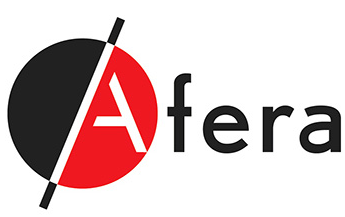
Afera Tape College 2024 Day 2
Morning
The building blocks of adhesive formulations were the focus of this morning’s 11th Afera Tape College session exploring “tapes deconstructed”, chaired by Martijn Verhagen (Lohmann GmbH & Co. KG). Geert Vermunicht (TSRC Corporation) discussed the range of well-defined SIS block co-polymers and compatible tackifying resins which offer a wide formulation latitude to produce the most suitable PSAs.
Then Jarno Weemers (Synthomer) framed the complex chemistry of PSA formulations with his explanation of polymers and resins, their various properties, compatibility and parameters. The art of formulation is the balance between peel adhesion, tack and shear adhesion. Next, we moved from rubber to silicone systems with the presentation “The best of both worlds”, which detailed how silicones serve as high-performance adhesives, as well as release coatings, for a wide range of industrial adhesives and uses. Here Thomas Gröer (WACKER) illustrated the chain flexibility of the silicone-oxygen backbone in polydimethylsiloxane polymers which enables excellent adhesion and good release.
Before a networking break, Dr. Hans Peter Dette (3M) taught us all about the viscoelasticity of high-performance PSAs, including structure, properties and external influences. All adhesive tapes have at least one viscoelastic component: wet-out versus peel.
Lukas Berger (Sekisui Alveo) presented the design and manufacturing of polyethylene foams as backing material for powerful technical tapes for a wide range of applications, such as industrial, household, electronic, medical and construction. Moving from foams to films, Dr. Ingo Neubert (tesa) covered the variety of tape backings in the area of polymeric film, paper, foam, woven and foil, including their cost, influence on tape properties, and how they fit into manufacturing processes and applications. Companies are working on new, more sustainable tape backing concepts.
Papermaking and tape materials play crucial roles in our daily lives, from communication to packaging. In the last presentation before lunch, Mikko Rissanen (UPM Raflatac) taught us about the diverse sources of paper fibres, including cotton, wood, flax, and recycled paper products, and the process steps of modern release base papermaking and their effect on quality. He highlighted recent advancements, such as eco-friendly and specialty tapes, and future requirements for tape release liners.
During the panel discussion which followed, many technical questions were addressed, including the shift from oil- to bio-based feedstocks, which Jarno Weemers said was bound to happen and something Synthomer is working on.
Afternoon
Moderated by Michel Sabo (Nitto EMEA), the 3rd session of the 11th Afera Tape College centred around tape production, beginning with Michael Ortner’s (Mondi Group) overview of the application of silicone release coatings on substrates per end-application. Then came Peter Harendt’s (Lohmann GmbH & Co. KG) lesson on converting technologies per tape, describing slitting, laminating, spooling and various die-cutting technologies, including pre-converting. The highest level of qualified application process requires pre-defining the bonding areas in thickness, width and design.
“The devil is in the details,” explained Steffen Lambertz (JHT Jakobs-Houben Technologie GmbH) about coating and drying technologies in roll-to-roll production. Most methods of coating, the most important process step in a coating line, require trials. He also discussed making processes sustainable through pattern coatings, substitutional products and energy recuperation. Next, Nils Ritterhoff (ENTEX Rust & Mitschke GmbH) talked about the many adhesive compounds which can be processed continuously on planetary roller extruders. Processing restrictions such as thermal sensitivity, high filler volumes, different material morphology, large viscosity gaps within formulation and highly volatile content can be overcome.
Lastly, Jürgen Pomorin (Evonik) instructed our audience on the chemistry of release coatings, which protect adhesive layers of tapes prior to use and usually come on a carrier called a release liner. Release performance contributes substantially to the conversion properties of self-adhesive products.
Dinner for the 120 participants was held at a nearby traditional German restaurant, providing a warm, causal atmosphere for catching up and building connections with the European tape industry. "These days at the Tape College offer the perfect combination of learning and networking in a professional setting, and because of the way the programme is formulated, including time for networking outside of the conference room, I am quickly reminded that Afera means family," Katharina Burak (Nichiban Europe GmbH).


